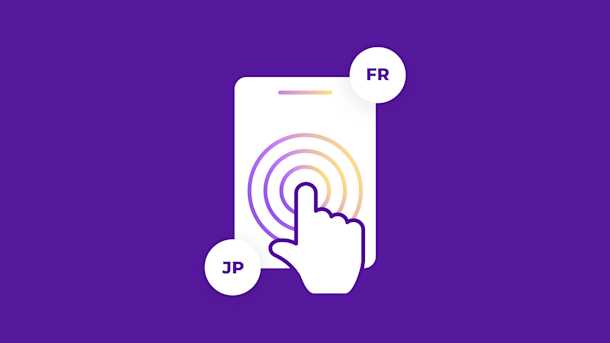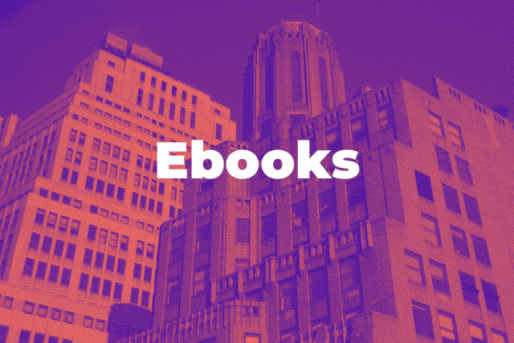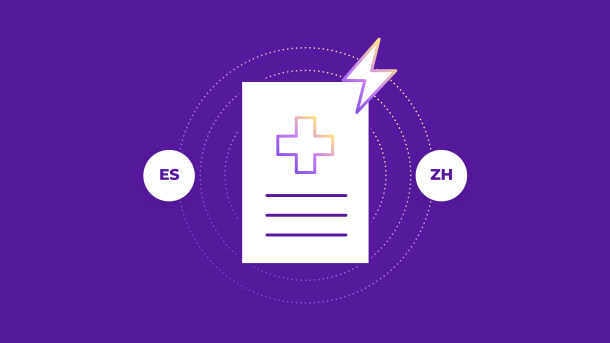Communication is a top priority for app experiences. The more efficiently brands can translate materials that connect with audiences, the more likely they are to provide a positive user experience, increase sales, and build a longer customer lifecycle.
That's why marketing managers and company leaders need a fast, reliable, and accurate way to localize app content.
Together, we'll dive into the reality of app translation. Then, we'll discover ways to scale these translations affordably and with greater speed and accuracy.
The global appetite for apps and the need for translations
 Localized app content helps you reach more customers, increase sales, and eliminate cultural barriers.
Localized app content helps you reach more customers, increase sales, and eliminate cultural barriers.
Mobile apps aren't going anywhere. They're convenient and easy to use, which is why consumers spent $171 billion on them in 2023. Not only are they beneficial for customers, but they also provide brands with the unique ability to communicate directly with users through in-app experiences, push notifications, and more.
Traditionally, content translations have been expensive, prone to human errors, and time-consuming to produce. And unfortunately, not all brands that want to successfully internationalize their experience leverage localized app translations. These poor brand experiences affect customers’ brand perception, as well as companies’ long-term success.
Translating for a unified positive experience
If multilingual users get an app that is different from your core brand experience, you can't effectively sell to and connect with those audiences.
In the worst case scenario, a translation error or offensive mistake will alienate customers. They'll see your brand as a foreign company that doesn’t understand their needs and identity.
Experiences that miss the mark are even more damaging because of the competition for users’ attention. They have many apps to choose from, and notifications bombard them every few seconds. If an app is confusing and contains hard-to-read translated content, then users are less likely to open it in the first place.
Instead of trying to keep up with the demand for apps that meet users’ expectations by using a complex process, brands can adopt an app translation service that keeps them on top of their globalization strategy.
These opportunities are why PhonePe launched an Android discovery app store with 12 Indian languages for 95% of the country’s population—tapping into huge growth opportunities to expand its reach. The company’s localization strategy fulfilled critical needs from unmet groups across India’s tech space.
In a Pymnts interview, Sameer Nigam, the CEO of PhonePe, claims that “Indus Appstore embodies our commitment to building a truly inclusive digital ecosystem where every Indian user feels at home." "Feels at home" is the key phrase in initiatives like these. Meeting users where they are, no matter their culture or language, will undoubtedly create stronger brand connections, meet users’ needs, and help companies grow.
But first, companies need to overcome some common friction points when translating app content for local audiences.
Barriers and challenges in international app markets
There are a few obstacles for companies to tackle as they produce a localized app for multilingual audiences. Leaders can identify these challenges and create opportunities with the right translation platform, such as an app translation service that includes localization.
Below are common barriers that companies face:
1. A wide variety of content and devices
Users have a hundred different apps on many different devices. Some apps use push notifications, while others use different means to create competition for attention.
But the good news is that once you find a way to persuade a user to consistently choose your app over other apps, you’ll have their full attention. You can then more effectively engage with customers as they navigate and interact with your app.
Developers and companies need to create a user-friendly app experience, great user interface functionality, and an intuitive onboarding process. But none of these work as intended with poor translations. Businesses can expect stronger connections with audiences when they create more accurate translations. In turn, customer activation and long-term customer retention will increase.
2. Increased demand for new languages
Every language that you don't communicate in is a missed market opportunity. Companies that don't localize their content and products miss out on millions of potential customers.
That's why we believe localization is one of the best ways to quickly multiply company growth.
It's like a food truck that sells meals to hospital employees but ignores the lunch rush an hour later at the office building across the street. More customers need you than just your original market. All you need to do is fulfill their needs on their level.
Using app localization services, you can add new languages and local audiences to your localization strategy to grow your business.
 Create apps that are a perfect fit for your local audience. A remarkable experience starts with localized communication.
Create apps that are a perfect fit for your local audience. A remarkable experience starts with localized communication.
3. Shorter release cycles
Juggling app experiences with different languages and local audiences can be challenging. This is especially true when dealing with updates, hotfixes, and overall release cycles.
Developers and brands want to ship iterations fast, so delays that slow down your creation process and prevent you from releasing the highest-quality app version are unreasonable. It can also be frustrating when you have an improved app but customers have to wait for it due to a lack of translated content.
Language doesn't have to be a barrier to improving applications, fixing bugs, and providing better experiences. Similarly, developers don't have to wait on slow translation processes to release updates in specific local markets. Instead, they can streamline the process with AI translations, a human linguistic team, and a translation management system to ensure that translations are accurate to the local market’s cultural nuances.
4. Fast shipping for high-quality translations
We all know that companies can grow by reaching new markets, but how fast can that growth scale? We can’t depend on only English content to reach international audiences. Content needs to be in an audience’s local language and context—but that level of localization is time-consuming without the right tech and service stack.
Traditional translation methods require humans to translate content effectively and accurately. Then, when you need to update your app with new content, it becomes even more tedious to comb through existing text and add new localized information.
Thankfully, that all has changed. Through the combined approach of AI translations, expert translators, and translation management systems, localization has never been faster than it is today.
Core needs for an app translation workflow
You need the right tech stack to create efficient and accurate translated content for your app.
The best way to translate app content is with AI-powered human translation. With this approach, you can use AI, human expertise, and management systems to translate content, verify accuracy, and publish translations. This way, businesses can build an affordable, fast, and accurate workflow for localization.
 Companies can combine the latest technologies with human expertise to create the perfect localized app content.
Companies can combine the latest technologies with human expertise to create the perfect localized app content.
You can use the following checklist to help build your translation stack:
1. AI translations
In the last few years, AI translation accuracy has dramatically increased. Users can input a sentence and receive a high quality, on-brand translation in seconds. Because of this innovation, brands can now translate billions of words in real-time, which saves them time and money and helps them ship more content faster.
Machine translation software, such as Smartling's Neural Machine Translation (NMT) Hub, leverages multiple translation engines to create highly accurate content translations. Depending on the need or situation, the NMT Hub chooses the right engine for the task so you get the most accurate, relevant translation possible.
However, while AI offers quick translations with near-perfect accuracy, it does not fully localize content. As brands communicate with local audiences, they face multi-layered cultural nuances and complexities that often shift and evolve. That's where human experts come in.
2. Human expertise and translation management
Thanks to the speed of AI translations, professional human translators can focus their energy on verifying translation accuracy for the local audience.
These translators are different from your average translator. For example, these linguists should be local to your target region. This means they know the local audience because they are a part of it. Expert translators who understand their audience can more easily navigate cultural nuances and create hyper-localized content translations.
Smartling, for example, recruits the highest-performing local translation experts in the market for its professional translation services. These experts have the local expertise to effectively enhance and translate content so it connects with users like a local company would.
Human experts are an essential part of accurate and effective translations, but so are the processes and tools that they work with. The translation process is only effective when human experts use software that helps them improve, collaborate, and manage the translation pipeline.
Translation management systems provide the infrastructure to efficiently process translations and ensure that they meet high-quality localization standards.
Once your translations are good to go, though, your team will need a way to distribute the content.
3. Translation deployment
Companies need the right tools to implement their translations. They can reach new markets and provide value to local audiences by using effective platforms to publish their localized content.
Translation proxies, such as Smartling's Global Delivery Network (GDN), allow companies to efficiently give users localized content based on their location. The GDN provides the correct content version for each target audience so you can engage with them and encourage them to download your app.
Smartling also allows you to centralize your content across all devices and platforms so you can easily publish app content via web proxies, integrations, and application programming interface endpoints.
Convincing users to try your app in the first place is the majority of the battle. But deploying quick translations and updating content without delay helps you achieve that necessary goal.
App translation services should provide a straightforward way to publish content updates. Finding a tech stack that solves all the needs in this list is also critical to successful app localization.
Smartling's unique approach to app translation
Smartling’s home page (Source)
Smarting's AI technology, which combines machine translation technologies and human linguists, allows app developers to translate marketing and in-app copy accurately so companies can provide a smooth, frictionless, and enjoyable user experience across multiple languages.
Because of Smartling’s streamlined translation service, app localization is now fast, affordable, and accurate—the perfect combination for scaling your localization strategy.
By automating your localization process using Smartling’s AI technology and human linguists, you can expand into new markets, better connect with audiences, and localize your strategy confidently.
Book a meeting today to see how Smartling can localize your brand for increased reach, sales, and growth.






